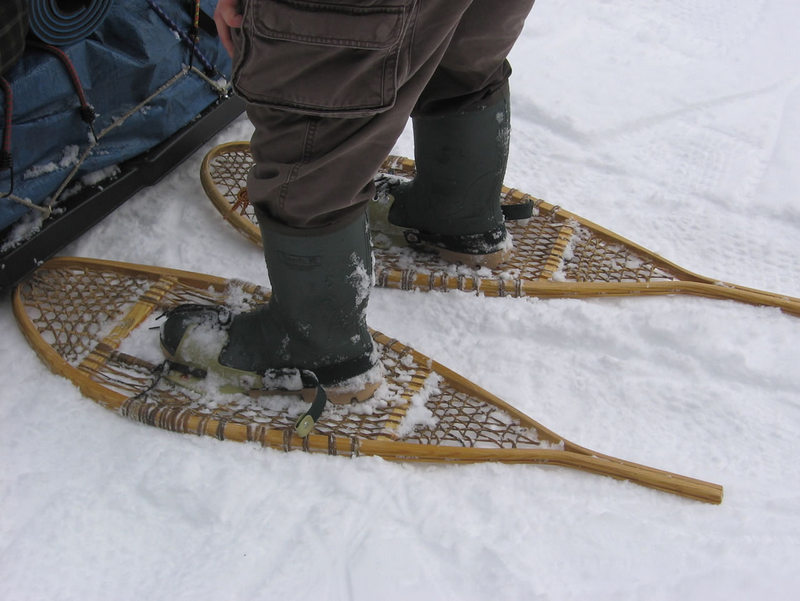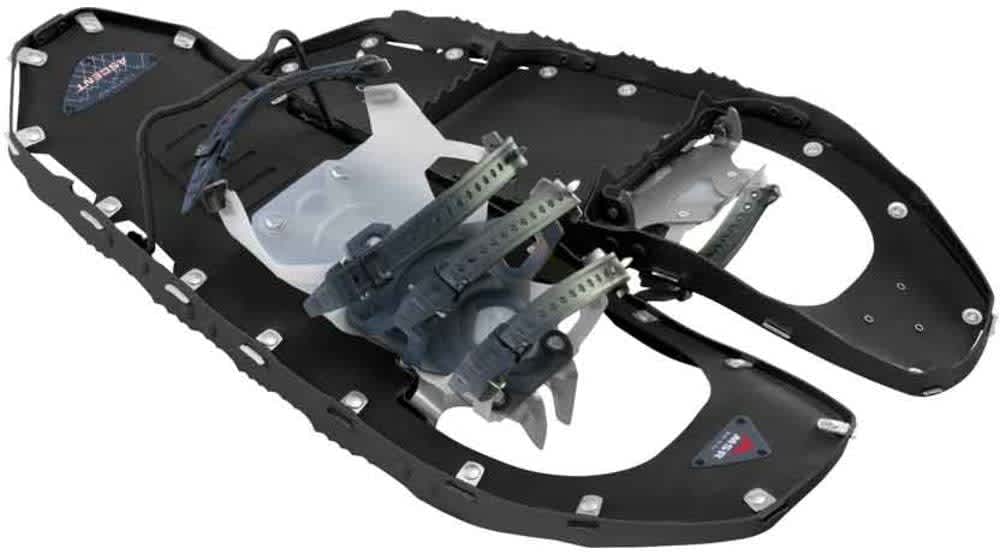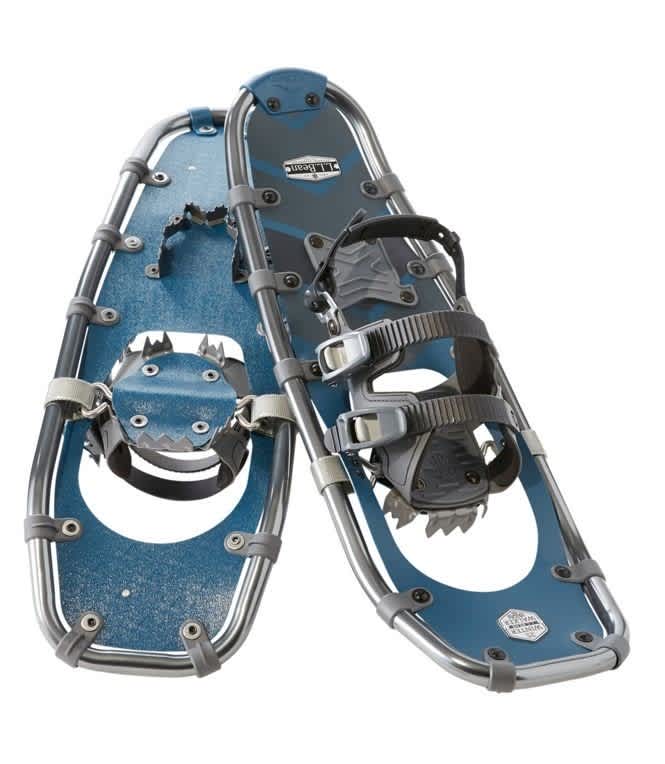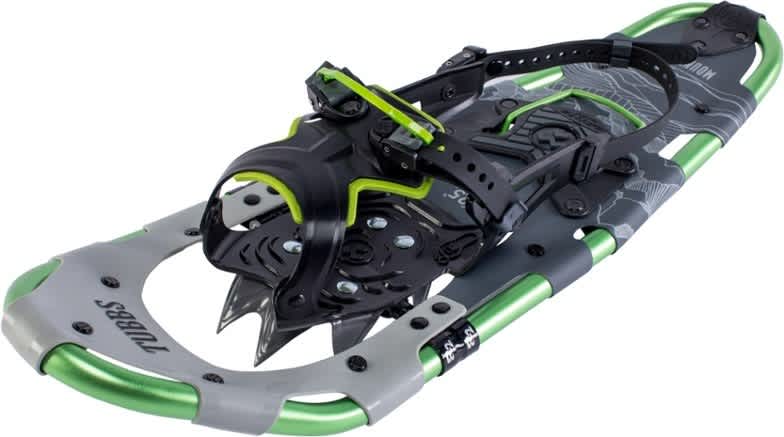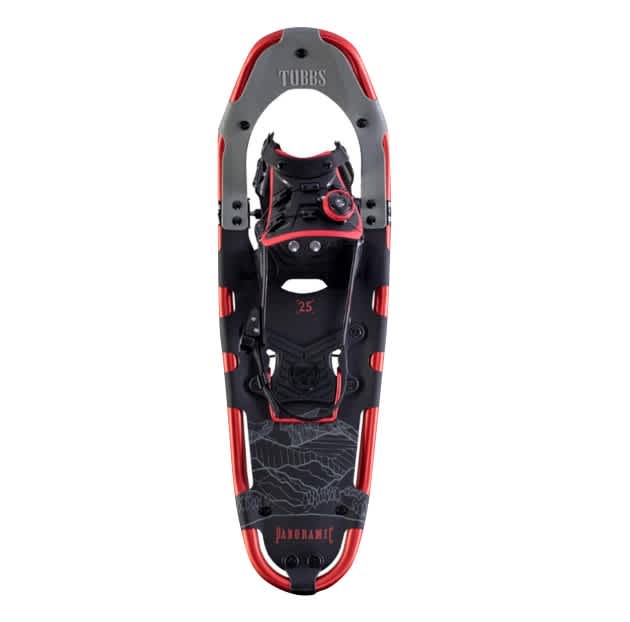Products You May Like

+
–
Table of Contents
1. MSR Lightning Ascent Snowshoes – Editor’s Pick
If you want the best in durability MSR’s Lightning Ascent snowshoes are made from some of the best materials and feature advanced traction technology that helps keep you moving through both thick snow and limited icy conditions. The Lightning Ascent shoes also feature new Paragon bindings with freeze-resistant mesh and the overall design of these particular shoes will give you 360-degree traction. The shoes come in two variants either 28″ or 30″ with the 30″ shoes capable of supporting up to 280-lbs.
Pros/Very Secure Bindings, Great Traction, Very Durable
Cons/The bindings have been said to be difficult to use when wearing winter gloves
Bottom Line/Solid overall performance in every important category
2. TSL Highlander Adjust Snowshoe
Trekking across snow can be tiring and as with any backcountry or off-grid hiking, the weight will be a big concern. The TSL Highlanders are some of the lightest snowshoes on the market weighing in at only 2-pounds per shoe. The Highlanders also feature some of the best weight distribution in their class and can hold up to 300-lbs for the large shoes. The Highlanders also feature a sound and shock absorbing system which makes them comfortable to wear and won’t generate excess noise.
Pros/Cutting Edge Design, Shock absorbing bindings
Cons/Expensive
Bottom Line/A great modern high-end option where weight and comfort are both concerns
3. Winter Walker Snowshoe
Featuring a more traditional design than some of the other modern snowshoes on this list. the Winter Walker Snowshoe features hardened steel crampons and ratcheting bindings for a secure fit. Although some snowshoes tend to be made from tougher tube steel, the Winter Walker’s feature a lighter aluminum frame that is still strong but saves on weight.
Pros/Very Affordable
Cons/Durability won’t be as great as steel or modern composite snowshoes
Bottom Line/A Great affordable option for some light hiking
4. Tubbs Mountaineer Backcountry Snowshoes
Featuring some pretty unique bindings and one of the best gripping crampons, the Tubbs mountaineer backcountry snowshoes are designed for their namesake. According to reviews, these high-end snowshoes work just as well in light snow and ice as they do in the worst snowy backcountry hiking conditions. If you’re looking for a pair of snowshoes that can handle it all and get you through the worst, look no further.
Pros/Durable, and highly adaptable to any snowy or icy situation
Cons/Very expensive
Bottom Line/Great for everything from the back yard to the mountains
5. Tubbs Panoramic
Comfortable and versatile, the Tubbs Panoramic give the user an easier and more comfortable time in the snow at the cost of some movement. While it doesn’t do so well on steep hills or in ultra-deep snow, it will get you through some tough trails and snowdrifts when you need them to. Featuring an easy on/off the binding system, the Tubbs Panoramic snow shoes are great to carry around when your stability on snow is uncertain.
Pros/Versatile and easy to take on and off
Cons/Not very well suited for more hardcore backcountry snow hiking
Bottom Line/Great for the casual snow hiker
Picking the right snowshoes for you
There are a few things to keep in mind when picking out the best snowshoes for you. Getting the wrong ones can prove to be exasperating and costly. The premise for most all snowshoes is the same – you are trying to expand your footprint over the snow to keep you on the surface and not sinking in as much as you would.
- Look at weight capacities before you buy and don’t overload your shoes. It can lead to you still sinking into the snow and being in more trouble that before.
- Look at the design and know what you plan to do. Most recreational snowshoes are designed for moderate terrain, while serious backcountry snowshoes will be equipped for more vigorous usage and icy terrain.
- Most modern snowshoes are made with an aluminum frame and are lightweight and compact. Traditional snowshoes are made from steam-bent wood and interwoven cording that creates the float. These shoes are larger and heavier, but offer that traditional feel and enjoyment.
Can you run in snowshoes?
First off, good job thinking outside of the box. Second, technically yes, you can run in virtually any style of snowshoe, and in fact, there are specific races and snowshoes dedicated to this particular sport. Snowshoe running obviously takes additional effort but when you’re running across miles of unpacked snow, the snowshoes actually help you keep up your pace without making you do the extra work of digging your feet out every time you take a step.
Do I need poles for snowshoeing?
Trekking poles aren’t necessarily required for snowshoeing but they do help increase your stability on uneven terrain. Much like skiing, some pros like to forego the poles in order to save on weight and bulk but they become increasingly important when you’re on extremely uneven or steep terrain.
How deep is too deep for snowshoes?
You can theoretically walk on any freshly fallen or powdery snow of any depth with the right-sized snowshoes. What you’re essentially doing is “floating” on the snow and how much you float is largely determined by the amount of displacement you can generate (think of your feet like a boat, the bigger and wider it is the more shallow it floats in the water). You’ll have to size your snowshoes specifically for your weight to include yourself, and your gear to make sure you’re not sinking too far into the snow which can lead to a more frustrating hike.
We are committed to finding, researching, and recommending the best products. We earn commissions from purchases you make using the retail links in our product reviews. Learn more about how this works.
